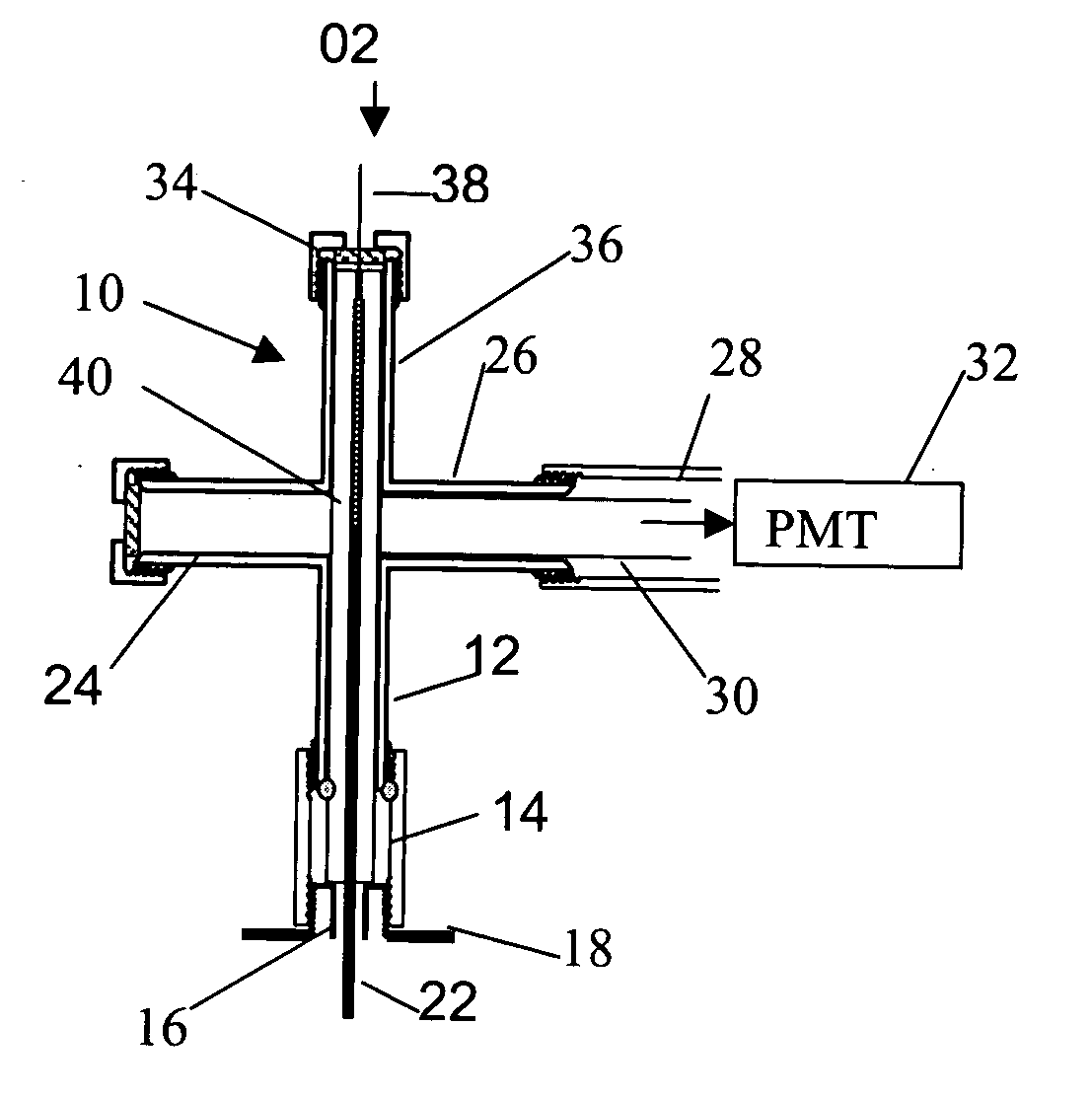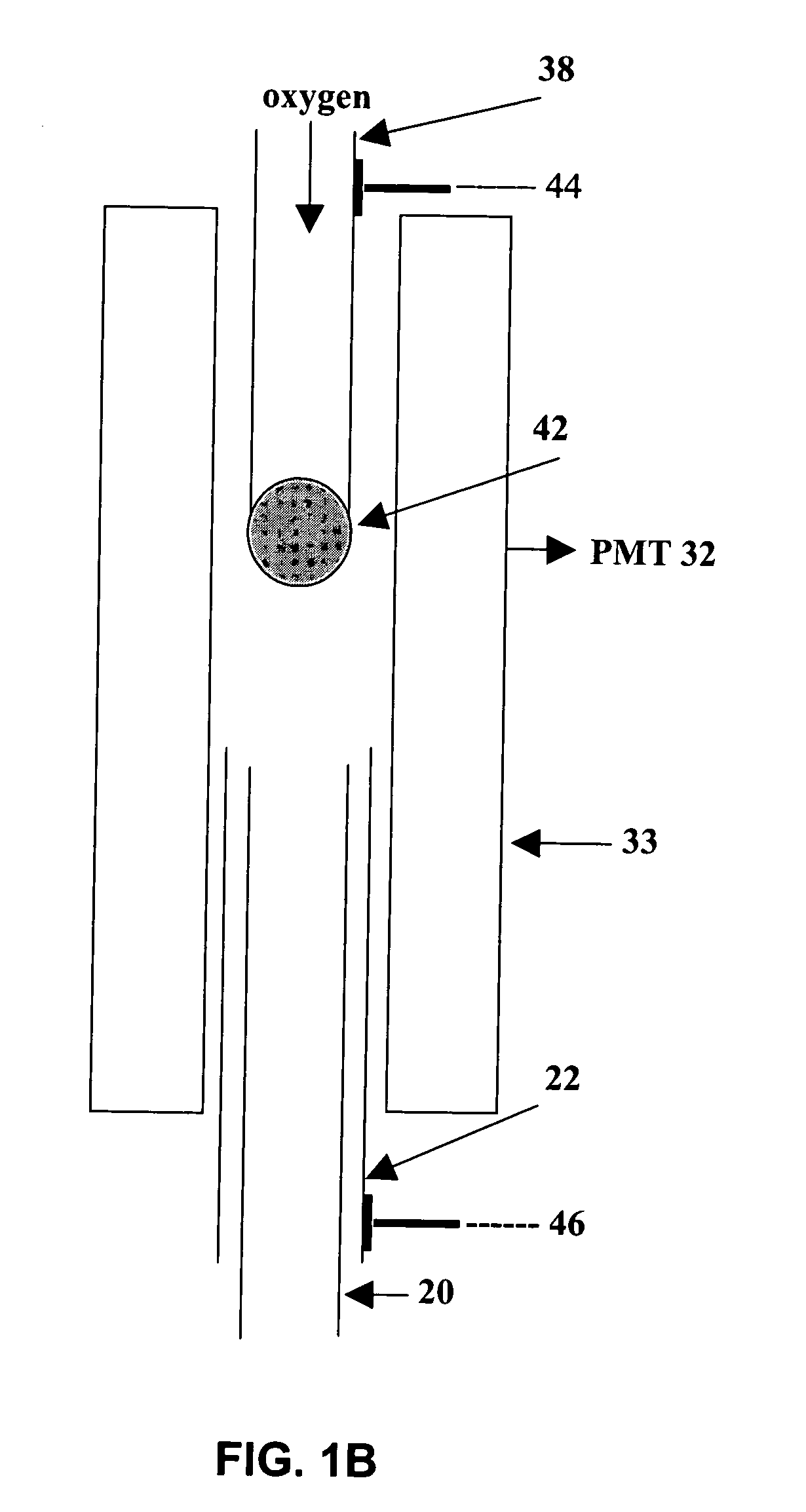Micro flame detector and method for gas chromatography
a flame detector and gas chromatography technology, applied in the direction of measuring devices, instruments, analysis by thermal excitation, etc., can solve the problems of relatively large detection limits of sulfur and phosphorus, relative few have been adapted to micro-analytical formats, etc., and achieve the effect of improving the respons
- Summary
- Abstract
- Description
- Claims
- Application Information
AI Technical Summary
Benefits of technology
Problems solved by technology
Method used
Image
Examples
Embodiment Construction
[0017] In this patent document, the word “comprising” does not exclude other elements being present and the use of the indefinite article “a” before an element does not exclude others of the same element being present. For the purposes of this patent document, including the claims, a flame photometric detector is considered to be a micro-flame photometric detector, or μFPD, if the flame volume is less 1 μL (1×10−6 L), which for example is satisfied when the flame dimensions are less than 0.1 mm×0.1 mm×0.1 mm.
[0018]FIG. 1A presents a simplified schematic illustration of a micro counter-current flame arrangement according to an embodiment of the invention. FIG. 1B shows a detail of the flame region of the μFPD. A housing 10 is conveniently made from a stainless steel ¼″ cross union (Swagelok™) that encloses the micro-flame. The cross design permits monitoring of the flame. The bottom 12 of the housing 10 is connected to a 10 cm length of stainless steel tubing 22 ( 1 / 16″ o.d.) for th...
PUM
 Login to View More
Login to View More Abstract
Description
Claims
Application Information
 Login to View More
Login to View More - R&D
- Intellectual Property
- Life Sciences
- Materials
- Tech Scout
- Unparalleled Data Quality
- Higher Quality Content
- 60% Fewer Hallucinations
Browse by: Latest US Patents, China's latest patents, Technical Efficacy Thesaurus, Application Domain, Technology Topic, Popular Technical Reports.
© 2025 PatSnap. All rights reserved.Legal|Privacy policy|Modern Slavery Act Transparency Statement|Sitemap|About US| Contact US: help@patsnap.com



